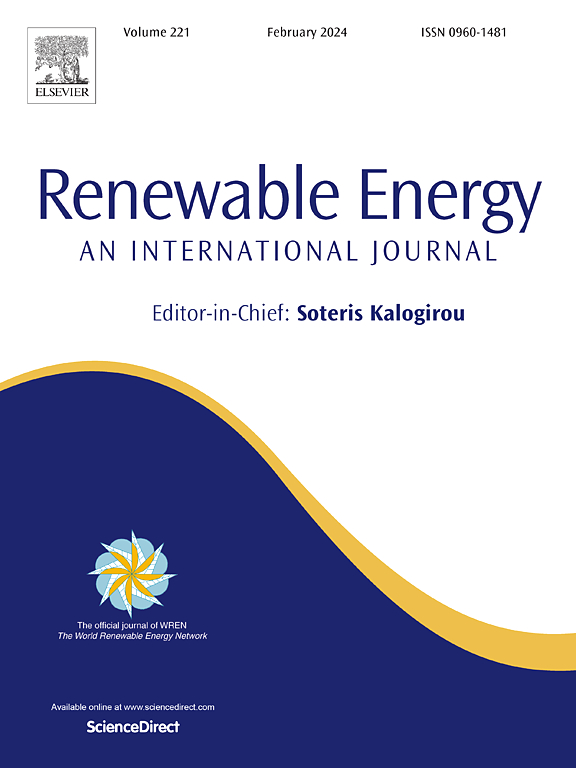利用地球静止卫星数据计算所有天空条件下相对天空辐射的模型
IF 9
1区 工程技术
Q1 ENERGY & FUELS
引用次数: 0
摘要
天空辐射数据对于准确理解太阳辐射在天空中的分布至关重要,这对于优化太阳能应用的能源效率和系统设计至关重要。本文提出了一种利用地球静止卫星数据计算泰国热带地区不同天空和气候条件下相对天空辐射的模型。利用那空佛统站5年的天空扫描仪测量的平均天空辐射和来自卫星数据的云指数来确定所提出模型的经验可调系数。为了验证其性能,对四个主要区域的相对天空辐射进行了分析。结果表明,该模型在晴空条件下精度最高,在阴天和中天条件下精度降低。所提出的模式倾向于高估晴空条件下的相对天空辐射,而低估中天和阴天条件下的相对天空辐射。然而,这些差异与以前的研究结果一致。并与CIE标准天空模型、Igawa模型和CIE- nasr模型进行了比较。对比表明,在不同的天空条件下,所提出的模型大多比现有模型具有更高的精度。本文章由计算机程序翻译,如有差异,请以英文原文为准。
A model for calculating relative sky radiance under all sky conditions using geostationary satellite data
Sky radiance data is essential for accurately understanding the distribution of solar radiation over the sky, which is critical for optimizing energy efficiency and system design of solar energy applications. In this study, a model for calculating relative sky radiance under different sky and climate conditions in the tropical environment of Thailand using geostationary satellite data is presented. Five years of measured average sky radiance from a sky scanner at Nakhon Pathom station and cloud index derived from satellite data were used to determine the empirical adjustable coefficients of the proposed model. To validate its performance, relative sky radiance measured at four main regions were analyzed. The results demonstrate that the proposed model performs best under clear sky, with accuracy decreasing under overcast and intermediate sky conditions. The proposed model tends to overestimate relative sky radiance under clear sky and underestimate it under intermediate and overcast sky conditions. However, these discrepancies correspond to findings from previous studies. Furthermore, comparisons with existing models were analyzed, including the CIE standard sky, Igawa, and CIE-NASR models. The comparison revealed that the proposed model mostly obtained higher accuracy than existing models under different sky conditions.
求助全文
通过发布文献求助,成功后即可免费获取论文全文。
去求助
来源期刊

Renewable Energy
工程技术-能源与燃料
CiteScore
18.40
自引率
9.20%
发文量
1955
审稿时长
6.6 months
期刊介绍:
Renewable Energy journal is dedicated to advancing knowledge and disseminating insights on various topics and technologies within renewable energy systems and components. Our mission is to support researchers, engineers, economists, manufacturers, NGOs, associations, and societies in staying updated on new developments in their respective fields and applying alternative energy solutions to current practices.
As an international, multidisciplinary journal in renewable energy engineering and research, we strive to be a premier peer-reviewed platform and a trusted source of original research and reviews in the field of renewable energy. Join us in our endeavor to drive innovation and progress in sustainable energy solutions.
 求助内容:
求助内容: 应助结果提醒方式:
应助结果提醒方式:


